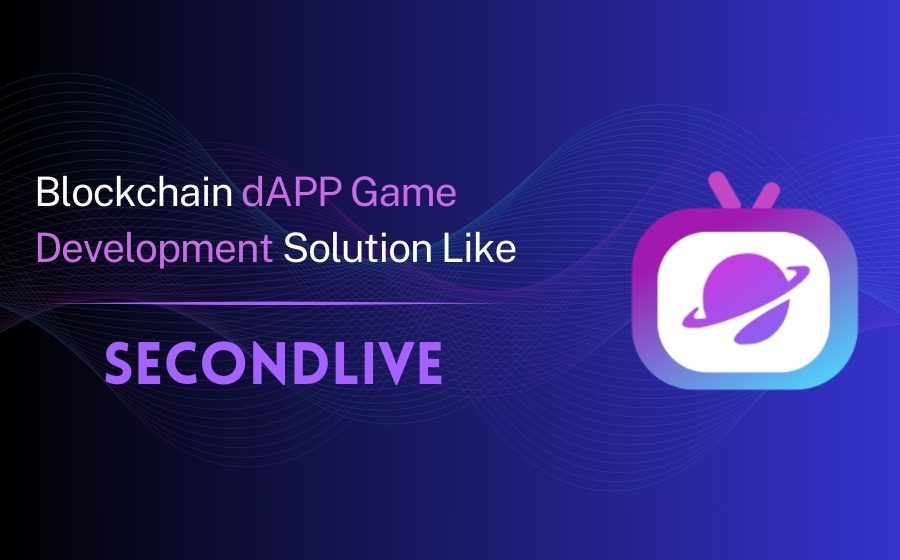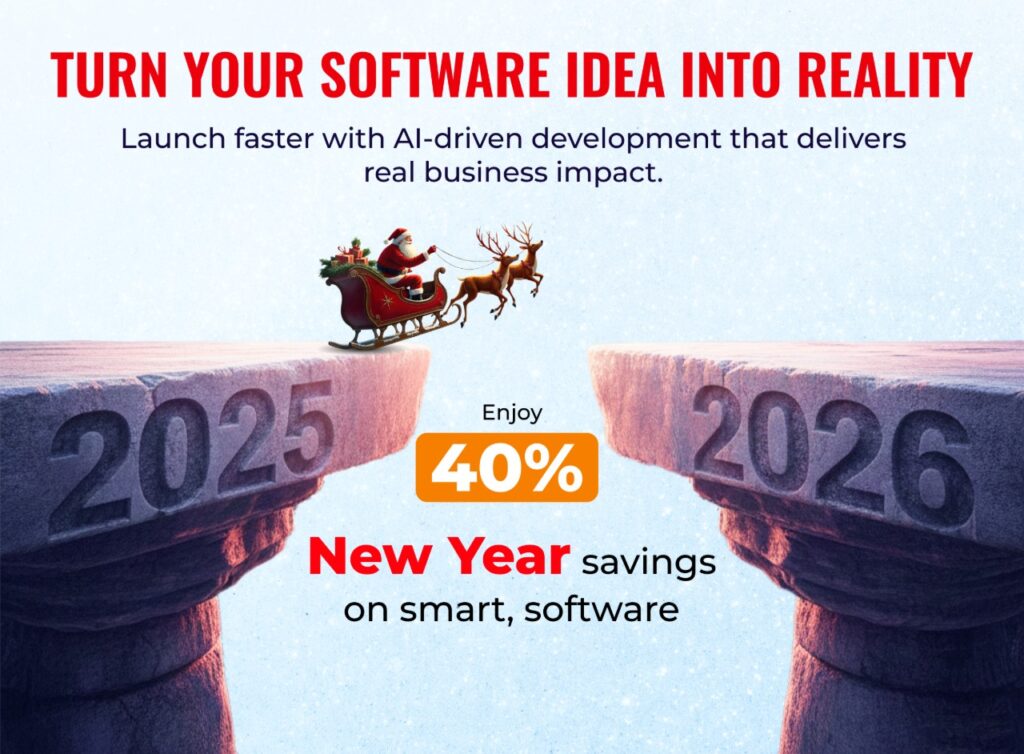Decentralized applications (dApps) and blockchain-based gaming have boosted the digital space with their innovation and user interaction. Platforms like SecondLive, which is a dynamic metaverse world where users are allowed to customize their avatars and socialize, as well as navigate within different virtual environments.
As businesses and startups aim to tap into the growing blockchain gaming industry, custom dApp games such as SecondLive are now more than ever in demand. The use of such seemingly advanced, decentralized technologies allows businesses to come up with entertaining offerings that drive users to interact with one another. This approach not only enhances brand visibility but also positions businesses at the forefront of the exciting world of blockchain gaming.
What is a dApp Game Like SecondLive?
A dApp game is an online game that is designed with the incorporation of decentralized blockchain technology, making it different from regular games. In these games, players can own all their in-game items and assets. For example, SecondLive is a dApp game where users can experience creating or experiencing a different world known as a metaverse.
Players design their avatar and can travel a number of virtual worlds, interacting with other people within them. Apart from the mentioned, another interesting factor about SecondLive is that players are able to create new and different experiences by creating new content.
The metaverse is also composed of NFTs, unique digital assets that users can purchase, sell, or trade and that can be utilized within the game. This leads to the formation of a virtual economy where players can meet and engage with one another, making the gaming experience even more lively and intimate.
Key Features of a dApp Game Like SecondLive
- Virtual Avatars & Customization: A dApp game like SecondLive lets the user create and edit a virtual avatar, meaning their own digital person representation. Such specific features allow users to create distinct characters to suit their preferences and style.
- Metaverse Exploration: SecondLive provides access to an expansive metaverse for users to enjoy different virtual places and worlds. This type of exploration considers all aspects of adventure and interaction, motivating players to explore new locations and experiences.
- NFT-Based Assets: In Second Live, players can own, sell, and purchase items including virtual land and houses through NFTs. These items are unique digital representations, which allow the gamer the real ownership of assets within these games, where they can be traded.
- In-Game Economy: The game features a decentralized economy that enables transactions using cryptocurrencies like Ethereum and Binance Smart Chain. Players with the virtual currency will be able to purchase certain goods, services, or even participate in experiences, increasing the worth of their gameplay.
- User-Generated Content: One of the key features of SecondLive is that it is based on user generated content. Players have the allowance of customizing the game by adding their own worlds, avatars, and experiences, which brings forth creativity and also the aspect of community in the game.
- Social Interaction: SecondLive allows voice communication, chats, and meetings among game lovers. Players can interact, combine efforts, and engage in play with one another immediately.
- Play-to-Earn Mechanics: The game integrates play-to-earn mechanics where players are able to earn cryptocurrency through engaging in activities such as performing tasks, and creating content. It also makes the game fun because this feature motivates the player to invest more hours in the game.
- Governance: SecondLive features a token-based governance system and allows users to vote for or against the implementation of a proposed update or new feature.
- Blockchain Integration: The incorporation of smart contracts into SecondLive’s operations improves its decentralization. This enhances the level of interaction in the gaming experience, as players are able to make transactions in a secure and transparent manner.
The Development Process for a dApp Game Like SecondLive
Creating a dApp game like SecondLive involves several essential steps:
- Planning & Requirement Analysis: Planning & Requirement Analysis: This initial step identifies the target users and the elements that are needed. Also, it defines the blockchain network, which is fundamental in laying the foundation of the project.
- Blockchain Selection: Picking the right blockchain plays a key role. Popular choices include Ethereum and Binance Smart Chain. Each option has its pros and cons especially with regard to speed, and costs.
- UI/UX Design: The team has to create a user-friendly interface and eye-catching avatars. A well-crafted design improves the user experience and keeps players engaged.
- Smart Contract Development: Writing smart contracts has a crucial impact on the game. These contracts manage transactions and NFT trading, which ensures secure operations within the game.
- Backend & Frontend Development: The backend is required to grow, and the frontend incorporates gaming mechanics. The combination of these two elements ensures that users have a positive experience.
- Integration with NFTs & Cryptocurrency Wallets: Users must link their wallets to participate in token transactions and purchase or sell NFTs. This architecture facilitates user engagement and enhances their interaction.
- Testing & Debugging: Thorough testing is important to ensure that the product developed, in this case, a game, is safe and free of glitches. This stage helps in maintaining high standards and gaining user confidence resulting in pleasant experiences.
- Launch & Post-Launch Support: After the mainnet (a completely developed blockchain protocol) launch, developers must keep providing support, updates, and new features that stem from player input. This ongoing assistance helps the game to grow and change over time.
Cost Breakdown for Developing a dApp Game Like SecondLive
The cost of developing a dApp game like SecondLive varies based on several factors:
Factors Affecting the Cost
- Game Complexity: The complexity of the virtual realms, use of NFTs, play-to-earn systems, and social elements make a huge impact on costs.
- Blockchain Network: Ethereum is usually on the expensive side due to the high gas fees associated with it. Options like Binance Smart Chain and Layer 2 are cost-effective and often preferred.
- Smart Contract Development: The cost increases when the contracts involve complex NFT creation and costly play-to-earn systems and decentralized marketplaces.
- Graphic Arts & Design: Designing 3D high-end settings, and fashionable characters requires higher investments. A good design ensures high user engagement and retention.
- Testing & Security: Smart contract audits and security testing are necessary for safe transactions involving cryptocurrencies and NFTs. This step is crucial for user trust.
Estimated Cost
- Basic dApp Game: $50,000 to $100,000 for a basic virtual environment, incorporation of basic NFT integration, and limited social features.
- Advanced dApp Game: Costs approximately $150,000 and even more than $300,000 for a metaverse, user-generated avatars, NFT integration, and sophisticated play-to-earn features.
Ongoing Costs
After the launch, projects start to incur costs for changes, fixes, upgrades, security updates and transaction costs whenever there is interaction with the blockchain. Resources have to be set aside by the developers for the continuous maintenance of the game both to make it relevant and to prevent security breaches.
Monetization Strategies for dApp Games
Developing a dApp game comes with various opportunities for monetization:
- NFT Sales: Generate income by offering in-game spaces, characters, and other assets for sale as non-fungible tokens (NFTs). Special types of items can appeal to customers and increase profits.
- Play-to-Earn Model: Allow the users to earn buyable chips within the game that can be exchanged for real money. This model is entertaining and promotes the playing activity of the players.
- Transaction Fees: Take a minimal estimation on each in-game business transaction using NFT or tokens, which will create an active income stream. These little amounts can aggregate over time.
- Subscription or Premium Models: Give paying users special content, customization options, or access to exclusive areas opening up new ways to make money. Regular subscriptions can provide a stable income.
- Partnerships & Collaborations: Team up with brands to put ads in the metaverse or back virtual events. This can boost interaction and make money through sponsorship agreements.
Benefits of Developing a Custom dApp Game
Developing a custom dApp game offers several key benefits:
- Ownership & Control: Blockchain technology gives players full control of their assets and in-game progress. This ownership makes the gaming experience better.
- Security & Transparency: Smart contracts keep all transactions and interactions safe, which builds player trust in the game’s fairness. This openness helps users feel confident.
- Decentralized Economy: Players can buy and sell NFTs and earn crypto tokens in a self-supporting economy. This feature gets users more involved and talking to each other.
- Global Accessibility: Players from all over can connect and trade without limits, which leads to a mixed and lively community. This easy access brings in a wide range of users.
- Long-Term Value: The mix of blockchain tech and NFTs makes sure the game lasts and can grow. As the game expands, players get more chances to benefit.
Why Choose Esferasoft for dApp Game Development?
When considering dApp game development, Esferasoft stands out for several reasons:
- Expertise in Blockchain Development: Esferasoft specializes in creating tailored dApp solutions, ensuring they meet specific client needs. Their team stays updated with industry trends and technologies.
- Experience in Decentralized Platforms: The team has been in the market for more than 17 years. With a strong background in NFT integration and gaming apps, they believe in delivering high-quality projects. Their expertise helps clients navigate the complexities of blockchain gaming effectively.
- Proven Track Record: With a portfolio of successfully developed projects, Esferasoft is committed to providing secure, scalable, and innovative solutions. Their dedication to quality ensures client satisfaction and trust.
- Client-Centric Approach: Esferasoft focuses on understanding clients’ goals and objectives. They provide personalized services, guiding businesses through every stage of development.
Conclusion
In conclusion, decentralized gaming offers exciting opportunities for interaction and engagement. Custom dApp games like SecondLive can revolutionize user experiences in gaming. They empower players with ownership and control, fostering a vibrant ecosystem.
Businesses and entrepreneurs should invest in blockchain-based gaming to ensure future growth and sustainability. The potential for innovative gameplay and user interaction is vast in this emerging market.
Contact Esferasoft today for expert consultation and to start developing your custom dApp game. Together, we can create an engaging and innovative gaming experience that captivates users and drives success in the blockchain gaming landscape.
Frequently Asked Questions
What blockchain is best for developing a dApp game?
The best blockchain for developing a dApp game depends on your needs. Ethereum is popular due to its strong ecosystem and extensive support for NFTs. However, Binance Smart Chain offers lower transaction fees and faster speeds, making it a cost-effective option.
How long does it take to develop a dApp game?
Development time varies based on complexity. A simple dApp game may take 3 to 6 months, while more advanced projects can take up to a year or longer. Factors like design, features, and testing impact the timeline.
Can I add custom features after my dApp game is launched?
Yes, you can add custom features after launching your dApp game. Continuous updates and improvements are common in the gaming industry. Developers can implement new features based on user feedback and market trends.
How do players earn through a play-to-earn model in dApp games?
Players earn by participating in various activities, such as completing tasks, winning battles, or creating content. They receive tokens or NFTs, which can be traded or sold, providing real-world value and incentives for gameplay.


